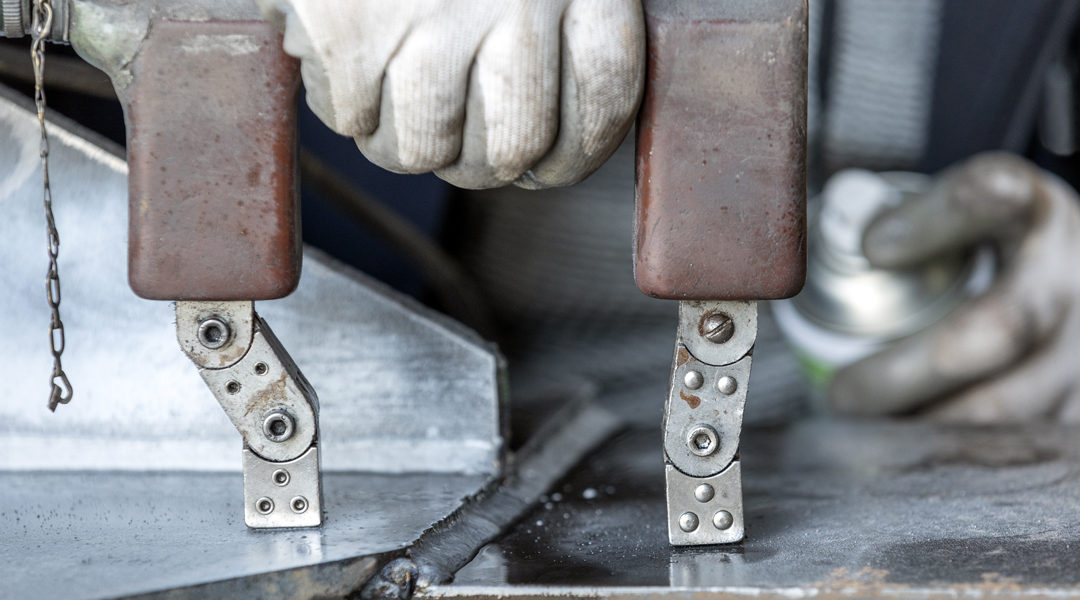Nondestructive testing (NDT) methods date back to the ancient Romans who used a mixture of oil and flour to find cracks in marble slabs. Today, though, we need more sophisticated techniques for more demanding products and industries. In aerospace manufacturing, we have made nondestructive testing a daily practice. Destructive testing may be an option for large volume, low cost parts, but aerospace parts are of the high cost, low volume variety, which means destructive testing is not practical. There are a variety of NDTs for aerospace parts, such as Nital Etching. Today, though, we’re talking about magnetic particle inspection and what advantages it has for aerospace parts.
Click Here for our The State of Aerospace Manufacturing Infographic
How does magnetic particle inspection work? The test takes advantage of the magnetic properties of ferromagnetic material (metals which can form permanent magnets) to detect errors in aerospace parts containing iron. When a magnetic field is introduced to the part, any defects in the material will cause interruptions in the field. When magnetic particles are introduced, they highlight these interruptions: they can either be colored for detection in light or coated with a fluorescent dye for detection under ultraviolet radiation. The latter method is usually the preferred method in aerospace manufacturing.

Magnetic Particle Inspection can be used in a variety of applications.
Let’s explore the benefits of this inspection process. First, the test doesn’t take very long to perform and the results are immediate so there’s very little in the way of wait times. While the part needs to be cleaned, it does not need a deep or elaborate pre-cleaning. The test is very accurate in its ability to pinpoint exact problem areas within the workpiece. It can also indicate the severity of defects—allowing for specific, targeted finishing.
Magnetic particle inspection requires an electric current and a power source to work—so it can be performed at a workshop, but if a mobile power source is available, it can be performed on site. Additionally, when compared to radiography or ultrasonic testing, magnetic particle inspection is an inexpensive process. Finally, it is a flexible process—it can be used for large or small parts and even complex parts can be tested.
Hopefully, you can see that as a whole, the process is highly beneficial for aerospace parts, but there are a few precautions to be aware of. First, it can only be used to inspect ferromagnetic metals such iron and steel, but not for metals which aren’t magnetic such as stainless steel. It also shouldn’t be used for parts with a thick coat of paint: not only can it interfere with the accuracy of the test, but some paints can interact with the suspension fluid to give off fumes or even start a fire—especially in confined spaces.
Even though the results of magnetic particle inspection are highly accurate and it only requires a moderate level of skill to execute the test, the results are not always clear: especially to the untrained eye. It can also be unclear whether or not the magnetic field is strong enough to show the indications correctly. This is why it’s important to have a skilled hand and a trained eye examine the results of the test before approving the part.


